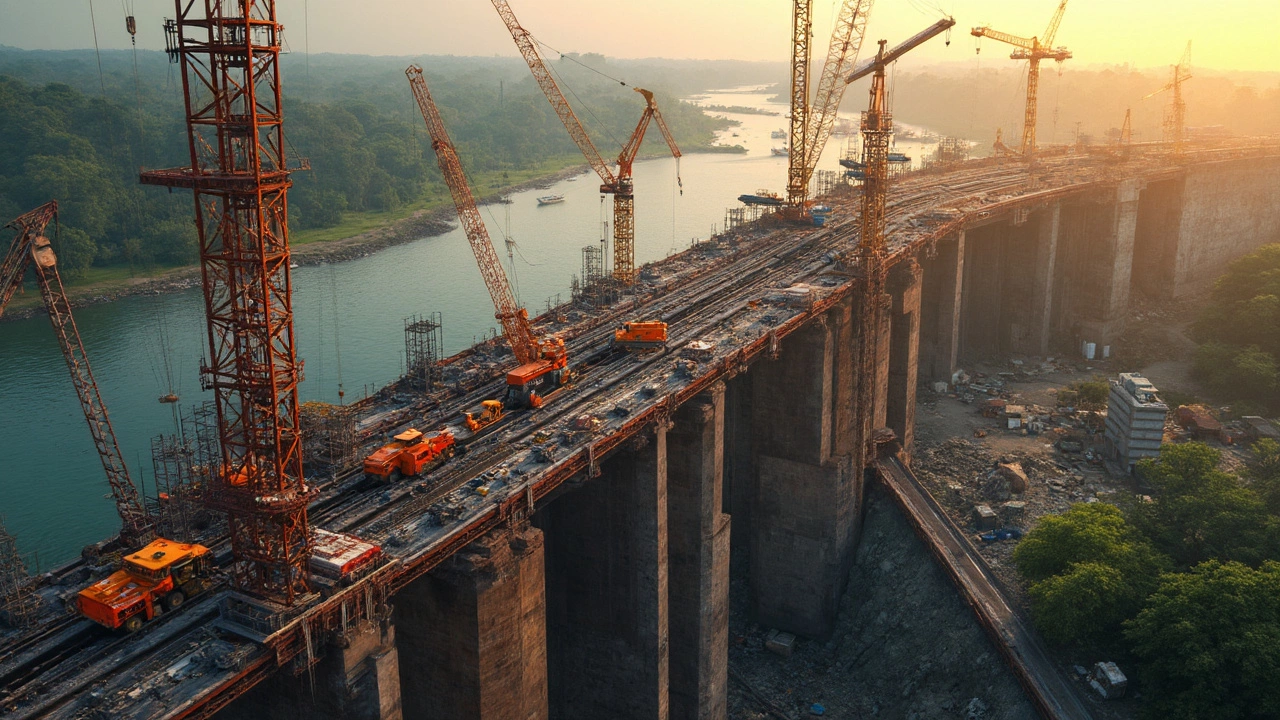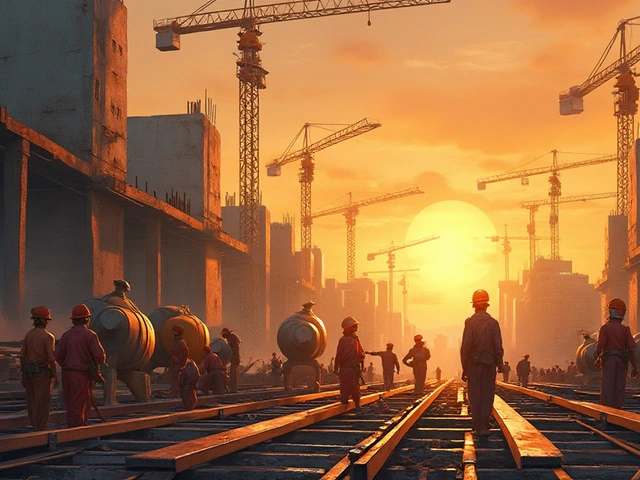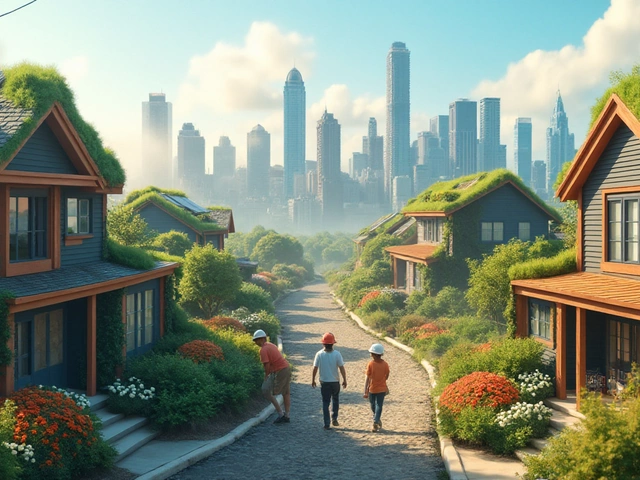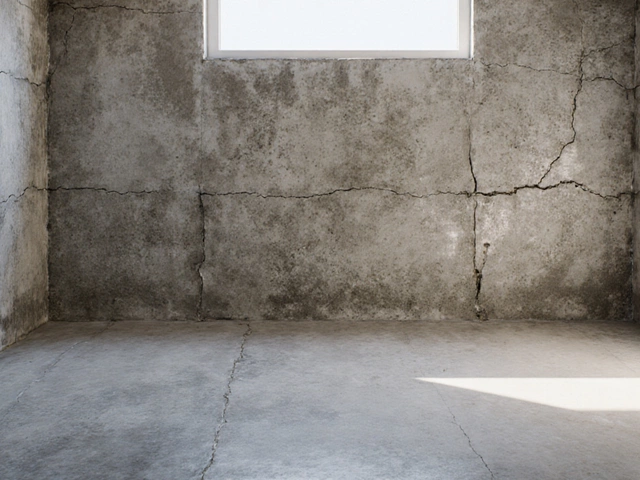Ever stared at a massive bridge or a sprawling shopping mall and wondered what sets these projects apart? It boils down to civil versus commercial construction, two sides of the building world that people often mix up. Let's break it down. Civil construction is all about the essential infrastructure around us—think roads, bridges, and dams. It's the backbone of our cities and towns, making life a whole lot easier.
On the flip side, commercial construction is where business takes shape. Literally. From office skyscrapers to charming boutique hotels, it's about creating spaces for work and trade. The stakes are high, ensuring the perfect blend of function and design is crucial. When you’re diving into construction, understanding these differences isn't just academic; it's practical wisdom. It's what helps you decide what kind of project you need and how to tackle it.
- Understanding Civil Construction
- What is Commercial Construction?
- Key Differences in Purpose and Scope
- Regulations and Compliance
- Common Challenges Faced
- Tips for Choosing the Right Contractor
Understanding Civil Construction
Civil construction is like the unsung hero of urban development. It's all about crafting the physical environment we depend on every day. Imagine highways, bridges, tunnels, and even sewage systems—these are some of the hallmark projects under the civil construction umbrella. This sector is crucial in shaping the infrastructure that supports economic development and community living.
Now, you might wonder what makes civil construction unique compared to other building practices. It's all about scale and purpose. The projects typically funded by public sectors aim to benefit the community and the country at large. They involve large-scale engineering tasks with a focus on durability and functionality, as many have to withstand the test of time and heavy usage.
Key Components of Civil Construction
There are several key components that define a civil construction project:
- Planning and Design: This stage involves detailed designs drawn up by civil engineers to ensure structures meet necessary safety standards.
- Permitting and Regulations: Projects often require multiple permits and adherence to strict government regulations, which protect public safety and environmental standards.
- Execution: Once the plans and permits are set, the actual construction begins, often involving various phases such as earthworks, foundation laying, and structural erection.
To give you a sense of scale, let's look at an example. The Interstate Highway System in the United States, often cited as one of the largest public works projects in history, stretches over 48,000 miles. It requires continuous maintenance and upgrades—a typical characteristic of large-scale civil construction works.
Challenges in Civil Construction
Executing civil construction projects isn't always smooth sailing. There are unique challenges like dealing with difficult weather conditions, managing complex logistics, and adhering to environmental concerns. Not to mention, coordinating a massive workforce often presents its own set of hurdles, especially when projects span many years.
Despite these challenges, civil construction remains at the heart of modern development. It's about creating structures that support our everyday lives, facilitating transportation, and ensuring clean water and waste management systems. When you see a new highway bridge pop up or a revamped city tunnel, that's civil construction in action, quietly shaping the world for the better.
What is Commercial Construction?
So, you're curious about commercial construction, huh? Think of it as the hustle and bustle of the construction industry. It's all about creating spaces where businesses thrive—whether you're popping into a cafe, checking into a hotel, or working in an office, commercial construction is the magic behind those doors.
Commercial construction is the umbrella term for projects that aren’t residential or industrial. It's diverse, covering everything from small shops to massive skyscrapers. One of the cool things about it is how adaptive it needs to be. Today's workplaces, for example, often require open spaces and tech-ready environments. That's a far cry from the cubicles of the past!
Types of Commercial Projects
There are various types of commercial projects you might bump into. Here’s a quick rundown:
- Retail: Malls, boutiques, and big box stores.
- Office Buildings: Where most 9-to-5 magic happens.
- Healthcare Facilities: Hospitals and clinics, needing specialized construction.
- Hospitality: Hotels, resorts, and venues for play and rest.
- Recreational: Gyms, theaters, and arenas.
Important Aspects of Commercial Construction
The projects come with their own set of priorities. Complying with zoning laws and accessibility standards is huge. You also have to think about aesthetics because, let's face it, no one's going to want to sip their latte in a drab-looking cafe.
Project Timelines and Budgets
Commercial construction often has pressures of quick timelines because, as they say, time is money. Budgets can vary dramatically depending on scope and location. According to a 2023 report, commercial construction costs in urban areas can soar, reflecting the demand for prime business locations.
Knowing what goes into commercial construction means understanding not just the nuts and bolts (literally) but also the human aspect—creating spaces you'll want to step into again and again.
Key Differences in Purpose and Scope
When it comes to civil construction versus commercial construction, the purpose and scope are like night and day. They may share some construction DNA, but they cater to different needs and scales.
Purpose
Civil construction is all about creating infrastructure projects that are public or common use. These projects include highways, water reservoirs, and educational institutions. The main idea here is to support society’s basic functioning, often funded by government entities. These jobs are crucial for everyone’s daily living.
On the other hand, commercial construction revolves around building structures where business and commerce happen. Think of shopping centers, hotels, and office blocks. Here, the goal is profit-driven, with a strong emphasis on functionality and customer experience. Businesses typically fund these projects, and the spaces they create need to attract and serve customers effectively.
Scope
The scope of civil projects is usually large-scale, involving massive land areas. It often requires collaboration with government bodies and strict adherence to public standards. Planning challenges can escalate quickly due to the scale and public interest involved.
Commercial projects, while they can be grand, usually focus on private investments and specific target audiences. They often emphasize design and amenities that appeal directly to consumer needs. The scope here is about creating spaces that facilitate commerce in the most efficient and attractive ways possible.
Regulation and Compliance
Both sectors face heavy regulation but civil construction must align closely with public safety standards due to their public nature. Compliance here tends to be stricter and more bureaucratic.
In commercial construction, regulations focus on health, safety, and zoning laws, but they can be more flexible in terms of design as long as fundamental safety standards are met.
Clearly defining the purpose and scope helps stakeholders align expectations and resources efficiently. Understanding these elements guides everything from design choices to contractor selection, ensuring that each project meets its unique set of goals.

Regulations and Compliance
Diving into commercial construction? You’ve got to ace the world of rules and regulatory hoops. Here’s the deal: every construction task faces a labyrinth of legal requirements. These dictate everything from the height of a building to the materials you use.
Understanding Building Codes
Building codes are your starting point. Imagine them as your construction rulebook. They ensure safety, energy efficiency, and accessibility. For instance, in commercial building projects, fire safety and ADA compliances are non-negotiables. You've got to get these right, or fines will pile up faster than bricks.
Permits and Licenses
Before even thinking about breaking ground, permits are your golden ticket. They come in flavors: zoning, environmental, and the basic building permits. Missing one? You might just face costly project halts.
- Environmental Permits: These control the environmental impact. Tough, but crucial. Nobody wants to build over protected habitats or mess with pollution limits.
- Zoning Permits: Ensures you're building where it’s allowed. You don't want your mall in a residential zone.
Inspections and Safety Compliance
Inspections aren’t daily nuisances—they’re lifesavers. These ensure that every phase of your project hits the safety bullseye. Important safety protocols must be ingrained in project workflows. Besides, frequent inspections keep everyone on their toes, maintaining standards.
Skirting civil construction nuances, these projects sometimes get the edge with certain exemptions, like heritage site projects. Wild, right? However, they are still tightly regulated when it comes to the safety of workers and traffic management.
Staying on top of these regulations is not just about avoiding penalties; it's about building a reputation as a reliable, ethical constructor.
Common Challenges Faced
No matter how experienced or skilled you are, every commercial construction project comes with its own set of headaches. If you've ever been involved in one, you know that juggling resources, budgets, and timelines feels like a high-stakes dance. Let's dive into what feeds this chaos and how you might tackle it.
Budget Overruns
Money can be a thorn in the side of any construction project. Costs can balloon due to unexpected materials needs, labor shortages, or design changes. A solid budget doesn't just keep the project moving; it’s what keeps it alive. So how do you stay on track? Frequent budget reviews and maintaining a cushion can save your skin.
Regulatory Compliance
You'd think with civil construction having its heavy regulations, commercial construction would have smoother sailing. Not quite. If you're not sticking to local building codes and safety standards, you're in for penalties or even suspension. Keep an open conversation with your compliance team to dodge these hurdles.
Supply Chain Issues
Ever been waiting on materials that just won't show up? It feels like time is slipping away. Logistics and unforeseen disruptions can cause major delays. The best way to handle this? Have a couple of backup suppliers in your pocket and keep that supply chain robust.
Workforce Management
Even if everything else is going smoothly, managing the workforce is a different beast. Skilled labor shortages or labor disputes can bring things to a standstill. Investing in good relationships through fair practices and proper training can mitigate these risks.
Check this out. According to a 2024 industry report, projects with effective pre-construction planning faced 30% fewer delays related to labor and materials. Planning ahead isn’t just advised; it’s critical.
Understanding these challenges and gearing up for them, rather than getting caught off-guard, is what separates a successful project from one that drags on and on. Every commercial construction site is a learning ground, full of challenges but also opportunities for growth and improvement.
Tips for Choosing the Right Contractor
Picking the best contractor can make or break your whole project. Whether it's a commercial construction or a civil construction, the right partner is crucial. Here are some practical tips to guide you in your selection process.
Check Their Credentials
First things first, always verify their credentials. A reliable contractor should be licensed and insured. This isn't just a box to tick; it's about ensuring they’re serious and professional.
Look at Experience
Experience counts, big time. A contractor who has handled construction differences in various projects has probably seen and done it all. They've faced challenges and solved them. Check their past projects, especially those similar in scope to yours.
Ask for References and Reviews
Don’t just take their word for it—ask for references. Call up some past clients and ask about their experiences. Also, read online reviews. You want someone who’s not just good at talking but is also great at executing.
Evaluate Project Management Skills
Effective project management can save both time and money. Discuss how they plan to handle timelines, budgets, and any potential hiccups. A contractor with solid plans gives you peace of mind.
Compare Bids Carefully
Getting multiple bids is smart, but don't just go for the cheapest option. Consider what’s included and whether the contractor is being realistic. A lowball offer might cut corners. Quality should be your priority.
Table of Contractor Statistics
| Aspect | Pros | Cons |
|---|---|---|
| Experience | Industry knowledge, problem-solving skills | May command higher fees |
| Licensing | Ensures legitimacy | Potential additional paperwork |
Consider these aspects to make sure you bring the right people on board. It’s not just about building stuff; it’s about making your vision come to life without the headaches.






